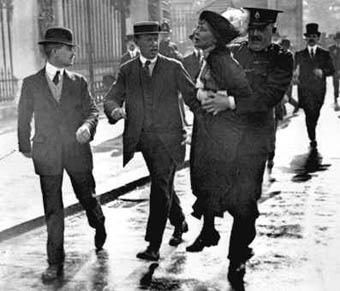Although we all have the right to vote, many people do not take advantage of this most basic democratic right. Your vote is the most direct way that you have of influencing the way your country and your local councils are run. People have fought long and hard for the right of everyone to be able to vote and for the equality of each person’s vote. One person, one vote. It makes sense to use your vote.
Voting in local elections decides who serves on the council and who controls the council. Elected Councillors are responsible for the council budget and for making decisions on the services the council provides. So your vote is your direct link with the service you receive. If you choose not to vote, and you do have the right not to for voting is not compulsory, your opinion has no effect on how the council or your country are run. You are expressing your democratic feelings by voting, you are making your point clear. No vote, no choice.
Listed below are some of the key points in the history and development of our right to vote:
•Early days: Originally 2 knights from each Shire (county) were sent to the Commons. These knights were elected by members of the local county courts. They were joined later in the Commons by 2 representatives from each Borough (town), although borough representation was not obligatory.
•By 1430: Only owners of freehold land worth over 40 shillings a year were eligible to vote in county elections. In boroughs qualification varied from each male head of household to those paying local taxes or to those who possessed property. This continued for over 400 years. By the end of the eighteenth century only 2% of the population could vote.
•1832: The Reform Act saw the redistribution of parliamentary seats to new cities and a change in the property qualification on voting. A uniform franchise was introduced in the boroughs giving the vote to those who paid more than £10 in rent or rates. Property qualifications also applied to those entitled to vote in rural areas. Only one man in seven now had the right to vote.
•1867: The Second Reform Act extended the franchise enabling virtually all men living in urban areas to vote. This added approximately 1.1 million men to the existing electorate of 1.4 million.
•1872: The secret ballot was introduced, initially as a temporary measure which was subject to annual review. It was established as a permanent measure in 1918.
•1884: The Third Reform Act gave men in rural areas the same franchise as those in the boroughs. The electorate now totalled over 5.5 million.
•1918: The Representation of the People Act gave women the right to vote, but only those over 30 years old. The electorate increased from 8 million to 21 million.
•1928: The Representation of the People (Equal Franchise) Act lowered the voting age for women to 21 years old.
•1969: The age limit for voting was reduced to 18 years old for men and women.

